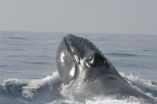But Charles Zuker, PhD, and colleagues at Columbia University Medical Center have discovered how the tongue detects high concentrations of salt (think seawater levels, not potato chips), the first step in a salt-avoiding behavior common to most mammals.
The findings could serve as a springboard for the development of taste modulators to help control the appetite for a high-salt diet and reduce the ill effects of too much sodium. The findings were published today online in Nature.
The sensation of saltiness is unique among the five basic tastes. Whereas mammals are always attracted to the tastes of sweet and umami, and repelled by sour and bitter, their behavioral response to salt dramatically changes with concentration.
"Salt taste in mammals can trigger two opposing behaviors," said Dr. Charles Zuker, professor in the Departments of Biochemistry & Molecular Biophysics and of Neuroscience at Columbia University College of Physicians & Surgeons. "Mammals are attracted to low concentrations of salt; they will choose a salty solution over a salt-free one. But they will reject highly concentrated salt solutions, even when salt-deprived."
Over the past 15 years, the receptors and other cells on the tongue responsible for detecting sweet, sour, bitter, and umami tastes—as well as low concentrations of salt—have been uncovered largely through the efforts of Dr. Zuker and his collaborator Nicholas Ryba from the National Institute of Dental and Craniofacial Research.
"But we didn't understand what was behind the aversion to high concentrations of salt," said Yuki Oka, a postdoctoral fellow in Dr. Zuker's laboratory and the lead author of the study.
The researchers expected high-salt receptors to reside in cells committed only to detecting high salt. "Over the years our studies have shown that each taste quality—sweet, bitter, sour, umami, and low-salt—is mediated by different cells," Dr. Ryba said. "So we thought there must be different taste receptor cells for high-salt. But unexpectedly, Dr. Oka found high salt is mediated by cells we already knew."
In experiments conducted by Dr. Oka, the researchers found that high salt concentrations activate previously discovered bitter- and sour-sensing cells. When one of these cell types was silenced and made incapable of sending messages to the brain, aversion to high-salt solutions was reduced, but not eliminated. When both cell types were silenced, the mammals completely lost their aversion to high-salt solutions, even showing unrestrained attraction to exceedingly salty solutions equivalent to those of seawater.
For mammals, ingesting high concentrations of seawater can lead to extreme dehydration, kidney failure, and death. With two aversion pathways, Dr. Oka said, animals have a safeguard to make sure that high salt is always aversive.
Now that all the salt pathways have been identified, Dr. Oka said, it may be possible to use that knowledge to make low concentrations of salt taste saltier, to reduce NaCl intake. It also may be possible to make the taste of KCl (potassium chloride), which has fewer long-term health effects than sodium chloride, more appealing to encourage its use as a salt substitute.
Taste Cells Will Lead to Understanding Where Sensations Are in the Brain
Though the commercial implications of the work are clear, the researchers' objective is not to find ways to alter our tastes, but to understand how we perceive the sensory world. How does the detection of high salt oncentrations on the tongue lead to a decision to turn away from a source of water? How can we tell the difference between chocolate cake and pumpkin pie? How do our taste sensations change over time? The answers are in the firing of neurons in the brain.
With the taste receptor cells in hand, the researchers have recently turned to brain imaging, mapping the neurons that receive information from the tongue's taste buds. The map was a surprise. Instead of finding the neurons scattered, as the taste receptor cells on the tongue are, they found discrete hotspots of the brain for each of four tastes: sweet, bitter, umami, and salty (sour has not yet been located).
Ultimately, they hope to understand how the firing of these neurons produces the sensations we call tastes.
INFORMATION:
The title of the paper is "High salt recruits aversive taste pathways." Contributors are Yuki Oka (CUMC/HHMI), Matthew Butnaru (CUMC/HHMI), Lars von Buchholtz (National Institute of Dental and Craniofacial Research, NIH), Nicholas J. P. Ryba (National Institute of Dental and Craniofacial Research, NIH), and Charles S. Zuker (CUMC/HHMI).
Y.O. was supported by the Japan Society for the Promotion of Science. This research was supported in part by funding from the intramural research program of the National Institutes of Health and National Institute of Dental and Craniofacial Research (grant number NIH ZIA DE000561) to N.J.P.R. C.S.Z. is an investigator of the Howard Hughes Medical Institute.
C.S.Z. is a scientific founder and scientific advisory board member of Senomyx. The other authors declare no financial or other conflicts of interest.
Columbia University Medical Center provides international leadership in basic, pre-clinical, and clinical research; medical and health sciences education; and patient care. The medical center trains future leaders and includes the dedicated work of many physicians, scientists, public health professionals, dentists, and nurses at the College of Physicians and Surgeons, the Mailman School of Public Health, the College of Dental Medicine, the School of Nursing, the biomedical departments of the Graduate School of Arts and Sciences, and allied research centers and institutions. Established in 1767, Columbia's College of Physicians and Surgeons was the first institution in the country to grant the MD degree and is among the most selective medical schools in the country. Columbia University Medical Center is home to the largest medical research enterprise in New York City and State and one of the largest in the United States. Its physicians treat patients at multiple locations throughout the tri-state area, including the NewYork-Presbyterian/Columbia campus in Washington Heights, the new ColumbiaDoctors Midtown location at 51 W. 51st St. in Manhattan, and the new ColumbiaDoctors Riverdale practice. For more information, visit www.cumc.columbia.edu or columbiadoctors.org.
END



